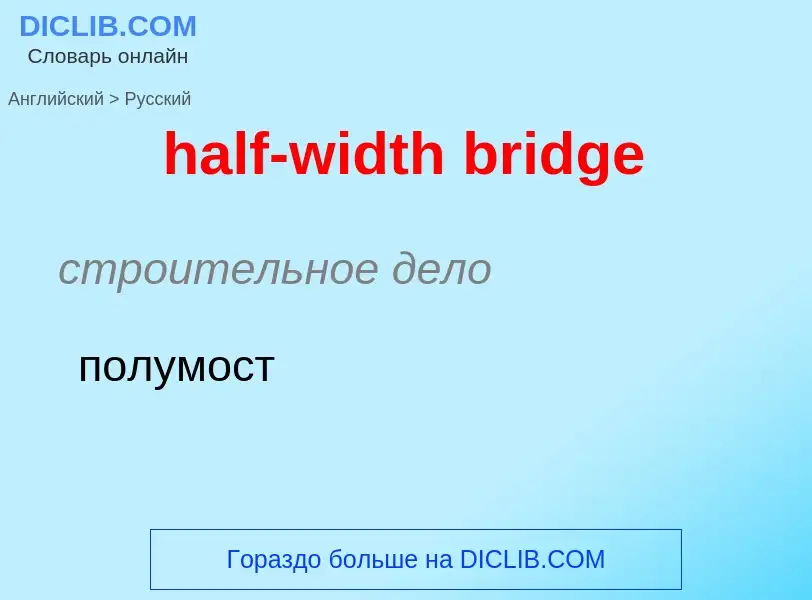Translation and analysis of words by ChatGPT artificial intelligence
On this page you can get a detailed analysis of a word or phrase, produced by the best artificial intelligence technology to date:
- how the word is used
- frequency of use
- it is used more often in oral or written speech
- word translation options
- usage examples (several phrases with translation)
- etymology
half-width bridge - translation to russian
строительное дело
полумост
['bi:mwidθ]
радиотехника
ширина луча
существительное
радиотехника
ширина луча
Definition
Wikipedia
Half-width kana (半角カナ, Hankaku kana) are katakana characters displayed compressed at half their normal width (a 1:2 aspect ratio), instead of the usual square (1:1) aspect ratio. For example, the usual (full-width) form of the katakana ka is カ while the half-width form is カ. Half-width hiragana is not included in Unicode, although it's usable on Web or in e-books via CSS's font-feature-settings: "hwid" 1 with Adobe-Japan1-6 based OpenType fonts. Half-width kanji is not usable on modern computers, but is used in some receipt printers, electric bulletin board and old computers.
Half-width kana were used in the early days of Japanese computing, to allow Japanese characters to be displayed on the same grid as monospaced fonts of Latin characters. Half-width kanji were not used. Half-width kana characters are not generally used today, but find some use in specific settings, such as cash register displays, on shop receipts, Japanese digital television and DVD subtitles, and mailing address labels. Their usage is sometimes also a stylistic choice, particularly frequent in certain Internet slang.
The term "half-width kana", which strictly refers only to how kana are displayed, not how they are stored – is also used loosely to refer to the A0–DF (hexadecimal) block where katakana are stored in some character encodings, such as JIS X 0201 (1969) – see encodings, below. This is formally incorrect, however – this JIS standard simply specifies that katakana can be stored in these locations, without specifying how they should be displayed; the confusion is because in early computing, the characters stored here were in fact displayed as half-width kana – see confusion, below.


![LED screen]] at [[Haiki Station]] displays シーサイドライナー (''Seaside Liner'') in half-width katakana. The [[dakuten]] does not seem to be treated as a separate character, though. LED screen]] at [[Haiki Station]] displays シーサイドライナー (''Seaside Liner'') in half-width katakana. The [[dakuten]] does not seem to be treated as a separate character, though.](https://commons.wikimedia.org/wiki/Special:FilePath/Electronic information displays on platforms 4 & 5 of Haiki Station.jpg?width=200)

